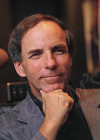HOME | ABOUT US | MEDIA KIT | CONTACT US | INQUIRE
HOME | ABOUT US | MEDIA KIT | CONTACT US | INQUIRE

High-school language-arts scores for boys continue to crater as masculinity-shaming efforts expand. Coincidence?
In 1955, author Rudolf Flesch wrote a major best-seller simply titled, “Why Johnny Can’t Read.” The problem then, as Flesch saw it, was the failure of schools to teach phonics. If Flesch were around today and took a look at Kansas test scores and reading lists, he would have material enough for a new bestseller, “Why Johnny Can’t Be Bothered to Read.”
First, the test scores. I use Kansas as a model not because it is uniquely troubled but because the Kansas State Department of Education does a good job of testing its students. I imagine
the scores in Missouri are comparable.
In almost every case, 10th-grade scores for English Language Arts (ELA) are higher than a school’s math scores. I feel a little cruel in even mentioning the scores at, say, J.C. Harmon High School in Kansas City, Kan. At Harmon, a mind-boggling 3 percent of the 10th-graders were deemed “proficient” in the English Language Arts. That score cannot be higher than the school’s math score, you ask? Yes, alas, it can be. Only 1 percent of the students are proficient in math. I’m told the first word students learn in Harmon’s French class is “Remboursez!” I want my money back!
Not Just an Urban Challenge
The suburban schools, on the other hand, might benefit from a little cruelty. Too many local boosters are way too satisfied with what might generously be called “mediocrity.” In Basehor-Linwood High School, for instance, 28 percent of the 10- graders were deemed ELA “proficient.” At Piper High, the figure was 32 percent. At Paola High, 25 percent. Even at Blue Valley High, the best-performing school in the state, 45 percent of the 10th-graders are not proficient in the English Language Arts.
The KSDE does not break out scores by gender. It should. Everywhere and since forever, girls have outperformed boys on language and reading skills (and underperformed on math). We hear plenty about the “gender gap” when it comes to math, and schools offer all kinds of gap-reduction programs.
Missouri, for instance, has a “Girls Collaborative STEM Initiative.” UMKC has a program, “Empowering Girls in Math.” Bishop Miege High School has a “Coding Club for Girls,” and the list goes on. If, however, local schools offer boy-specific programs to bridge the reading gap, they are not bragging about it.
Male underperformance on reading bleeds into the growing gender gap in college enrollment. In 2018, females earned nearly 59 percent of all the degrees—from associate to doctoral—
awarded in the United States. That disparity is only expected to grow. The Department of Education tells us that by 2027, women will earn 151 college degrees for every 100 degrees earned by men. This gap presents problems for colleges looking for students, and it presents even greater problems for young people looking for mates. Word to young men: if book larnin’ ain’t your thing, be handy.
To address the reading gap, we have to embrace what is now a provocative concept: boys are different from girls. Provocative? Apparently. In April, amiable young pundit Michael Knowles provoked University of Missouri-Kansas City students with a talk titled, “Men are different from women.” For his effort, Knowles was heckled by a slovenly mob of 30 or so students and sprayed with some icky, unknown substance.
In attempting to appease the campus community, UMKC Chancellor Mauli Agrawal called Knowles’ views “controversial” and “extreme.” He then pleaded with the rioters—last seen chanting “hands up, don’t shoot” after the cops subdued the substance sprayer—“to stay true to our values in the face of provocation, and to respond to bias and intolerance with reason and courage.”
Attending an all-boys high school, I got a different take on “reason” and “courage.” The lessons began with the summer reading list for incoming freshmen. Not much of a reader at the time, I was amazed to see that I actually enjoyed the books I was assigned to read.
I still remember many of them—Annapurna, Kon-Tiki, Red Badge of Courage, Mutiny on the Bounty, Men Against the Sea, Huckleberry Finn, Call of the Wild. Not only did
the books stir the soul, but they also taught boys what it took to be men. At least vicariously, we learned about courage, resourcefulness, perseverance, and teamwork. I cannot say that I have
climbed any mountains of note since then or crossed any oceans at less than 35,000 feet, but I do read at least 50 books a year as, I expect, do most of my classmates.
If I had to read the books boys are assigned to read today, I would be asking the school shrink to up my Ritalin dose. Common Core, for instance, offers a list
of 28 suggested books for high school students. What a dispiriting lot!
Or take another book, this one about General George Armstrong Custer. Said one reviewer, “a tale of arrogance, bred by ambition and ignorance.” For another take on the West, there is Bury My Heart at Wounded Knee, a tale of “the systematic annihilation of American Indian tribes.” Pass the Adderall.
Other than the books pitched at girls—Pride and Prejudice, Jane Eyre—virtually every book on the list is a downer: Death of a Salesman, Grapes of Wrath, As I Lay Dying, Great Gatsby, Glass Menagerie, Waste Land, Fahrenheit 451. Yes, there is the Adventures of Don Quixote, but this is not Broadway’s“Dream the Impossible Dream” Don Quixote. This is Cervantes’ misguided-fool Don Quixote.
In the increasingly popular Self-Hatred for Boys 101, now mandatory just about everywhere, boys are taught not what they can be or ought to be, but what they cannot be.
Is it any wonder they do not read?
Leave a Reply